
20+ Augmented reality advertising examples in 2025


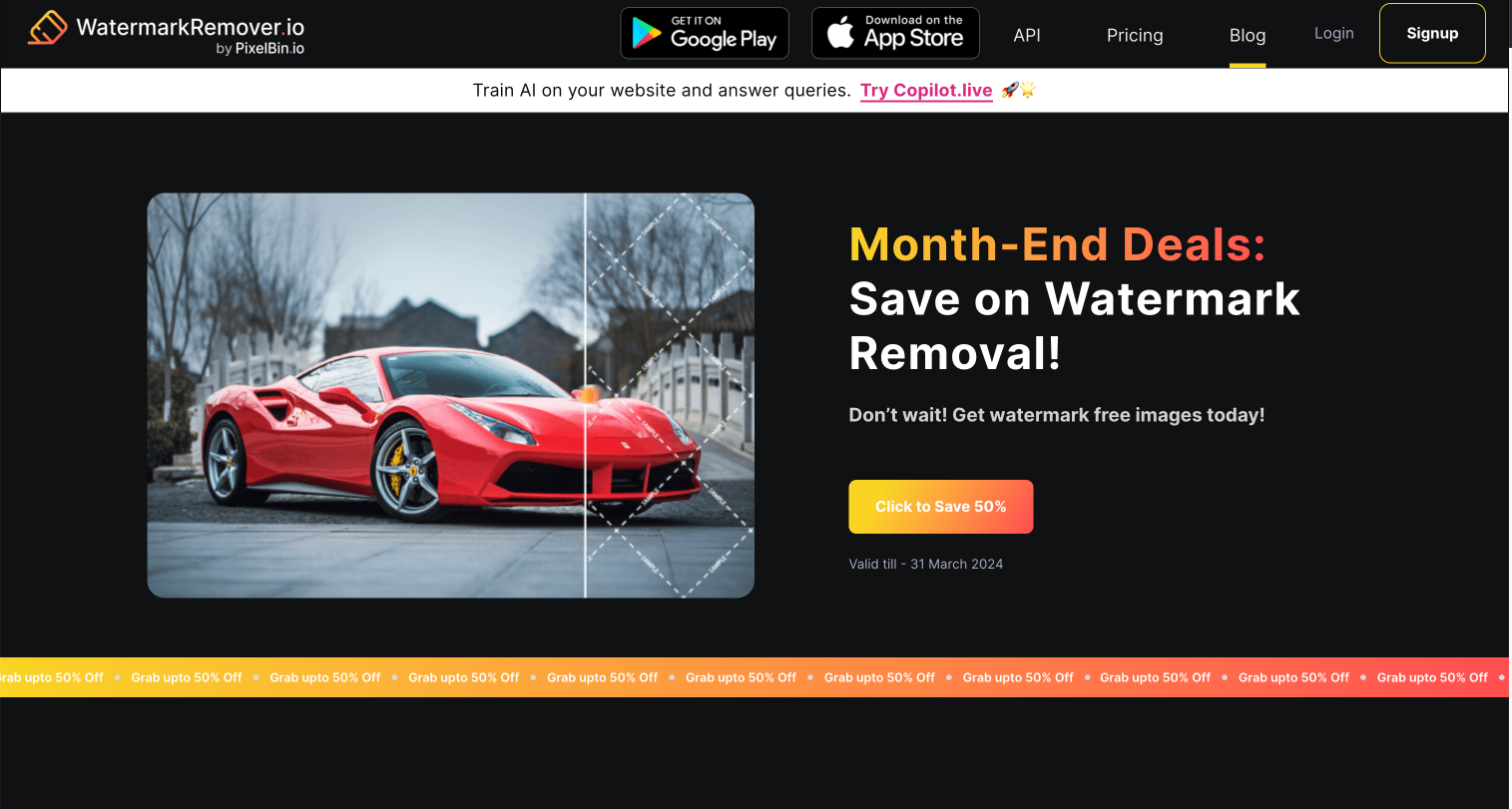
In recent years, augmented reality has taken the advertising game to another level, with an estimated user of 1.73 billion over the last year. AR puts dominance over every industry. Many big companies are changing their advertising strategy through AR, giving a smack on the traditional method. AR lets the user enjoy ads through their personal space with any device. It helps advertisers to create amazing and memorable content.
This technology has become a powerful tool for Product Briefing, storytelling, and audience engagement. AR gives a normal, boring ad a new life with its graphics and visuals; augmented reality has been the easiest and most interactive way of communication between brands and consumers.
With its Immersive Virtual try-on, 3D model design, and rotating views, AR can promote the product creatively yet detailedly. It gives the customer a complete idea of a specific product before buying, maintaining a healthy relationship between advertisers and their audience. Here, we will watch how augmented reality transforms the creativity of ads and its evolution over the years, as well as some of the top brand examples that used AR for their campaign.
What is augmented reality advertising?
Augmented reality advertising is a form of digital marketing that integrates virtual elements into a real-world environment to create an interactive and engaging user experience. AR technology uses digital elements such as visuals, information, animation, and sound to create lifelike content from devices like smartphones, tablets, etc. This unique approach grabs attention and connects brands and consumers to understand each other.AR advertising can transform a simple product into an interactive journey that engages the audience's attention and highlights brand performance.
Augmented reality advertising uses features like virtual try-on, which leads users to try anything in real time. It also gives a personalized campaign targeting a specific audience from each category. Augment reality advertising makes brands accessible to users via mobile devices or wearable technology. Users can enjoy the product demonstration from any side of the world, and it creates a dimensional compact of virtual and real surroundings.
20 Best examples of AR advertising (from history to now)
AR advertising has become a competitive practice between popular brands, challenging others' creativity, performance, and appearances. This technology has made the biggest outlets for brands across the globe. Here are some of the great examples of AR advertising used by brands.
1. Pizza Hut (2021)
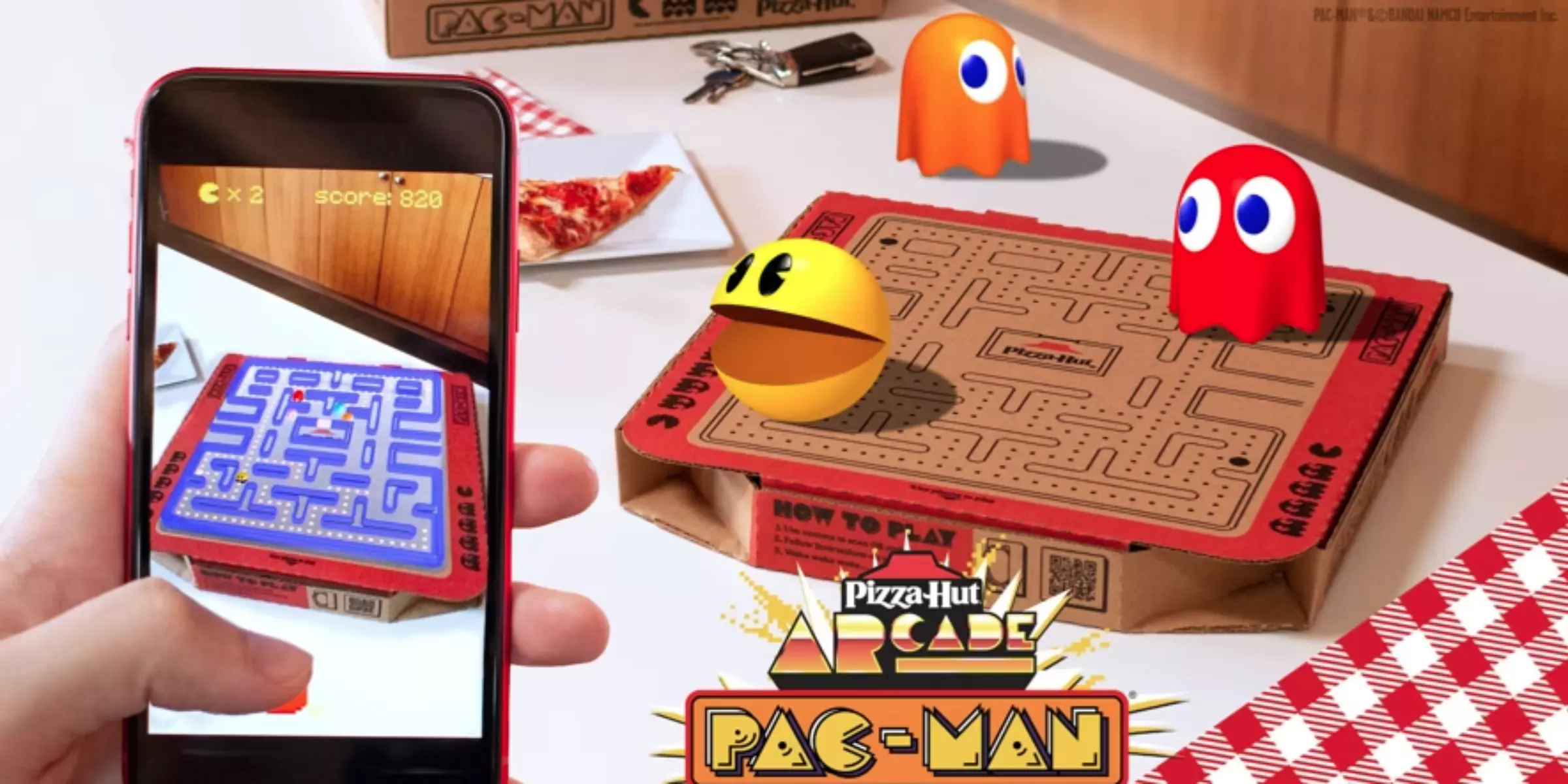
In 2021, Pizza Hut came up with a plan for its marketing campaign to create content that will stick to people's memories. From this campaign, Pizza Hut delivers the taste of nostalgia to their audience. Pizza Hut collaborated with the creative development tool and agency GSD&M to bring back the 80s arcade game PAC MAN into the AR campaign. By providing a sense of nostalgia with modern technology, pizza Hut breaks the boundaries of AR advertising.
Using the web AR platform 8th Wall, Pizza Hut and agencies deliver a special box to the customer that, when scanned by a mobile phone camera, brings the Pac-Man game to life at the top of the box through the web browser. They also grabbed attention by announcing that there would be winners to win prizes, which generated a buzz among the audience. During that period, Pizza Hut generated 741 million impressions, and 10.6 million Pac-Man pizzas were sold.
2. Dune Part Two
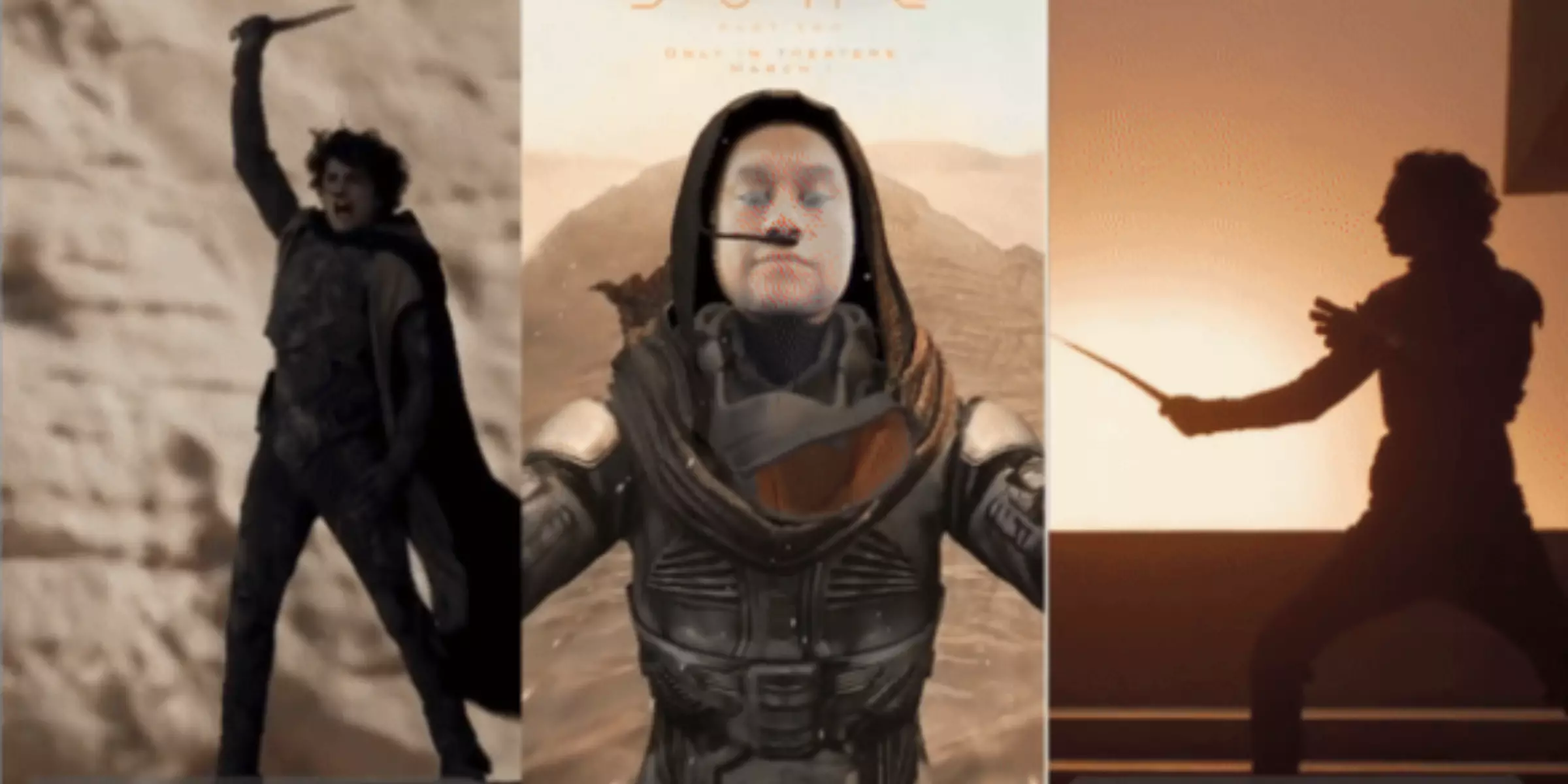
The easiest approach for AR advertising is filters and lenses, which involve smartphone cameras to blend the elements of digital content on the viewed area or the face of the user into digital space. As for the marketing push for the movie Dune: Part Two, Warner Bros partnered with Snapchat to create a Dune lens that allowed users to be freemen riding the desert sandworm into the fictional world of the Dune universe.
The custom stickers and lens ran alongside video ads for the film release, which enabled Snapchat users to tap on the ad and purchase movie tickets from the microsite. This campaign was a great example of how a simple concept can lead to something greater and can inspire user-generated content using AR, all while growing sales in tickets through the lens’ microsite.
3. Red Bull world series cliff diving
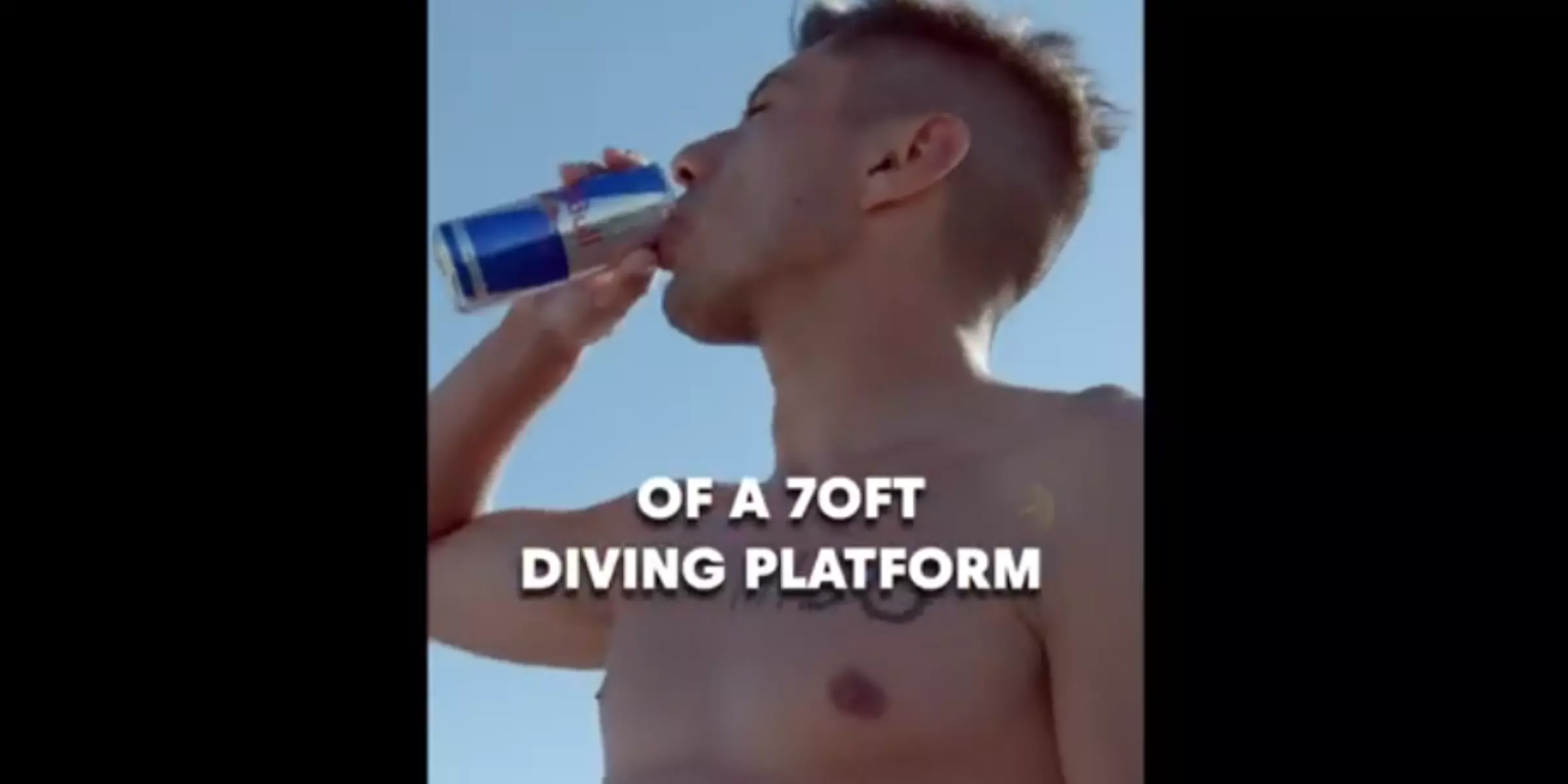
Red Bull, the great giant of energy drinks mainly known for its breathtaking stunts and sports events, but the consumer does not appreciate the hype of their events without being present live. So AR agency Rock Paper Reality came up with a solution to help Red Bull with the clever campaign idea of World Series cliff diving.
The campaign with webAR experience was built on the AR platform, which allowed users to experience what a 70ft dive looks like in front of their mobile by simply scanning a QR code.
4.Coca-Cola zero - #TakeATasteNow

On September 25 coca, Coca-Cola came up with the campaign #TakeATasteNow it was the first two-way controlled DOOH and AR experience by Coca-Cola. The user could change the ad ‘3D creative in real-time by using their smartphones. This campaign ran across the UK for three straight weeks, where Coca-Cola let users grab its zero-sugar drink before getting the voucher to purchase a real bottle from the participating Tessco store.
This Giveaway style of AR campaign is a prime example of B2c marketing. Here coca Coca-Cola gamifies its marketing strategies to get audience interest. Where the brand bends the user's perspective over the ad to think of it as a quest game, with the reward of real-life discounts or a free demo of the product. This act of treasure-hunting type advertisement made Coca-Cola sales go high.
5. Burger King - ‘burn that ad’ (2019)

In 2019, Burger King came up with a brilliant and creative idea for its AR campaign, which was ‘Burn That Ad.’ The creative agency behind this campaign, David Sao Paolo, solved two problems through this ad. First was BK's number one rival, McDonald's, spent four times on their ads, and the second was that not much of users purchased BK products from the app. This solution boosts BK's in-app purchases and an idea to promote from their competitors' ads.
To make this campaign work, the David agency thoroughly collected the MacDonald ad, including magazine billboards, digital ads, tray paper, and social media banners, to create a shelf of databases that were later used as tracking elements. When users film any McDonald's ads, the BK AR experience launches with flames burning away the McDonald's ad to reveal a whooper coupon, leading them straight to the BK app.
6. Top Gun: Maverick - AR call sign generator
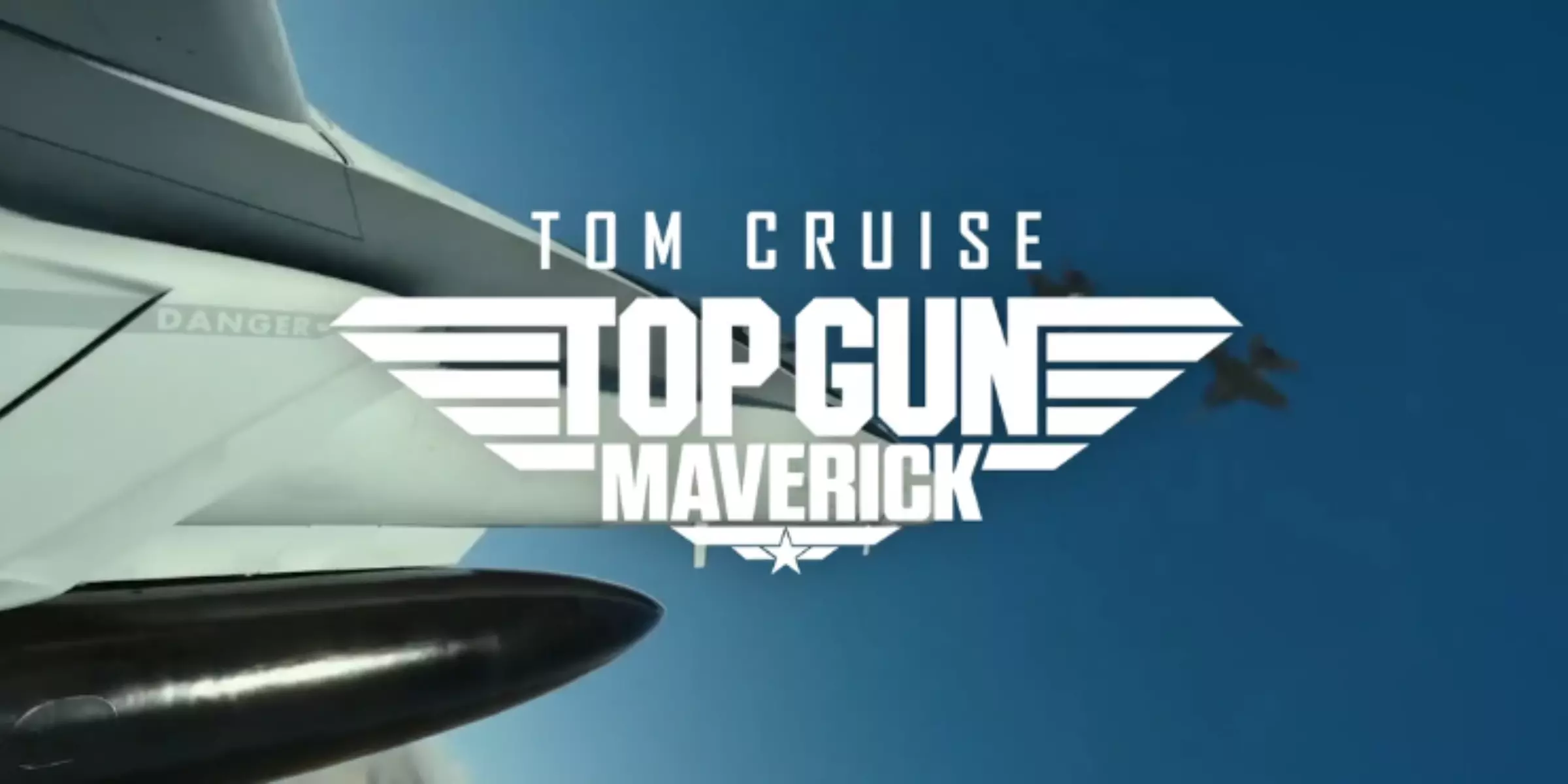
Top Gun, an absolute series of thrilling franchises, came up with its new hit Top Gun: Maverick in 2022. By looking at the buzz and the overhyped energy in the top gun fan community, the makers planned their promotional strategy to match the expectations this generation liking.
They created an AR campaign, “AR Call Sign Generator,” related to their movie theme. User could wear a holographic helmet and give some answers to the series-themed questions by making their own “AR Call Sign Generator” By sharing it on social media and feeling like a character from the movie.
7. Pepsi Max - ‘unbelievable’ bus shelter (2015)
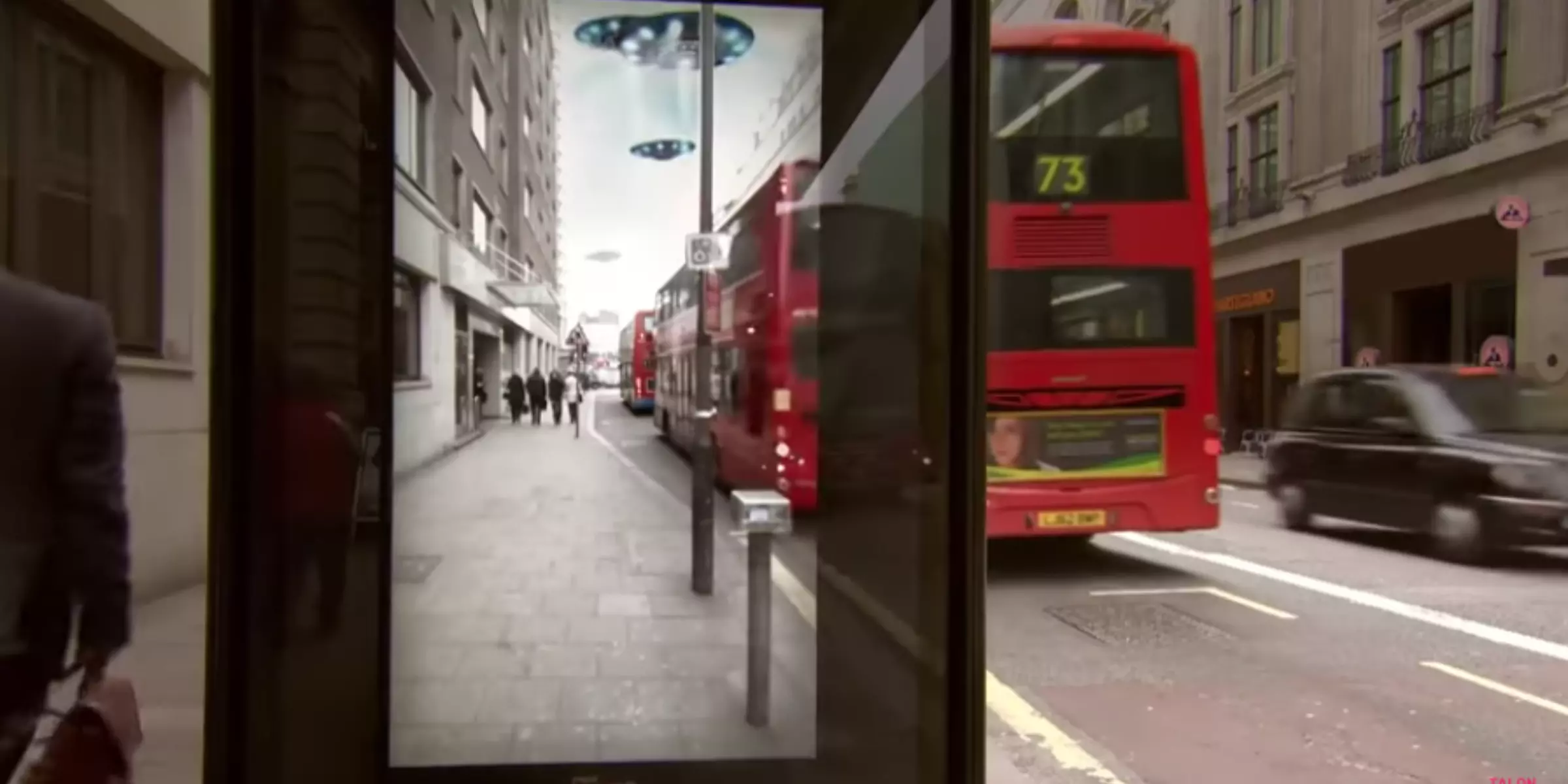
Pepsi Max did the most viral video of AR advertising on its ‘Unbelievable’ Bus Shelter campaign. Where Pepsi incorporates AR into the built-in environment, this award-winning ad relied on a camera placed under a bus shelter and composited with a live feed of streets, creating an illusion of a giant robot shooting, an asteroid falling, and tentacles coming from the pavement to grab anyone around the bus stop.
The campaign gains huge success, garnering millions of views and reaching over 385 million people around. BBC clicks on the ongoing features of the technology behind the campaign. Also, Pepsi sales went up 35% after their campaign was live.
8. Ikea - place app

A company of 1943 that gave the world a new way to decorate their home in 2017. Ikea Place app uses AR technology to give users an accurate idea to renovate their room from their smartphone devices.
This app scales products based on room dimensions with an accuracy of 98%. Its AR technology is to a point where you can see the texture of the fabric and the effects of light and shadow rendered on furnishing. The Ikea Place app gives your simple space a modern transformation and makes you create your dream room.
9. Netflix - open anime AR portal
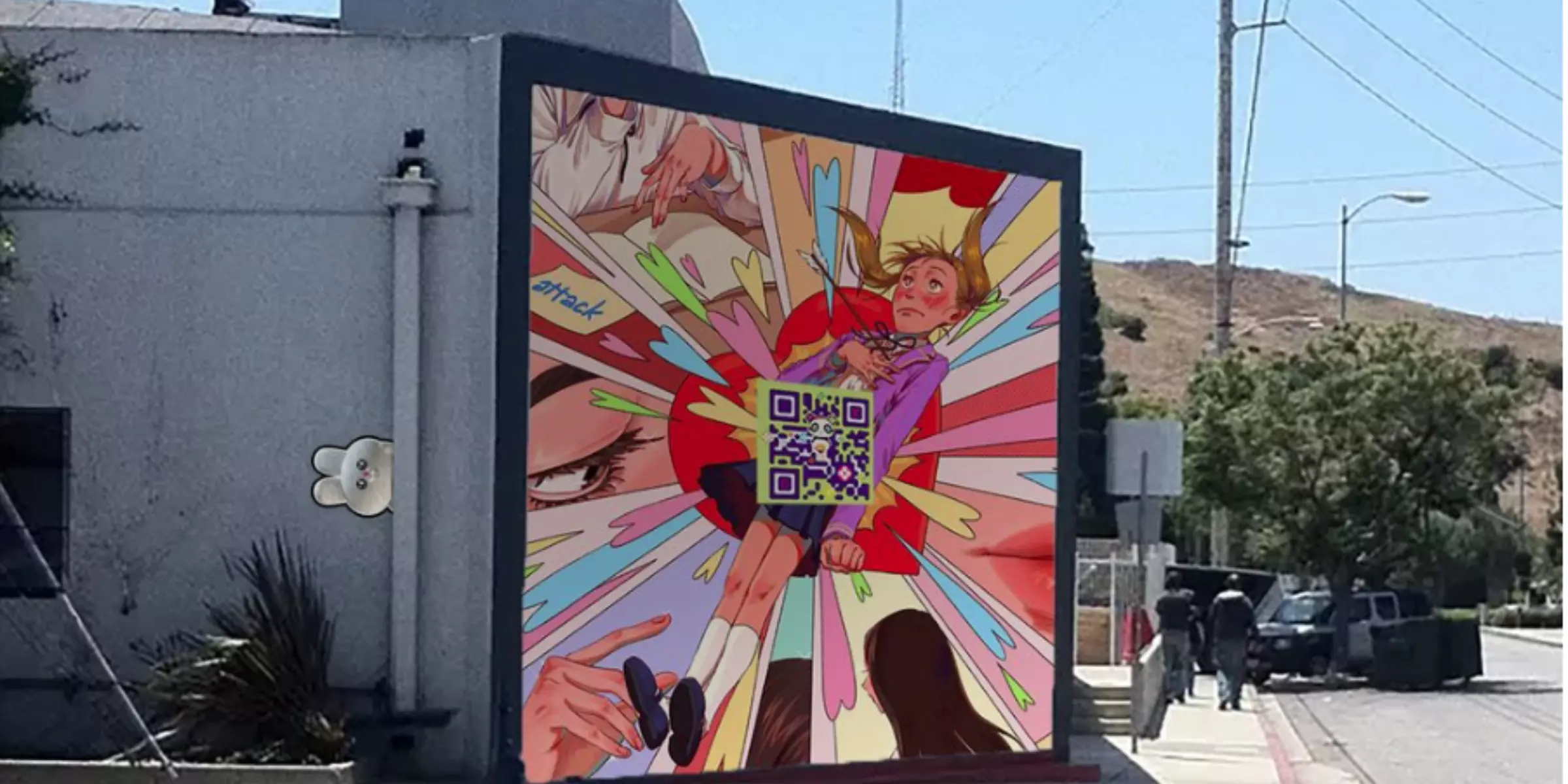
By looking at the growing popularity of anime on streams with shows like One Piece, Naruto, and Attack on Titan, Netflix created an immersive AR anime experience and microsites using A leading agency's image tracking functionalities.
Netflix’s Creative Labs collaborated with Powsters to give anime fans immersive AR portals that take users to Various anime vibes. These portals are all launched via QR codes on socials or OOH posters around the world, with their microsites giving unique immersive adventures.
10. Circle K & Niantic - pokémon go rewarded AR
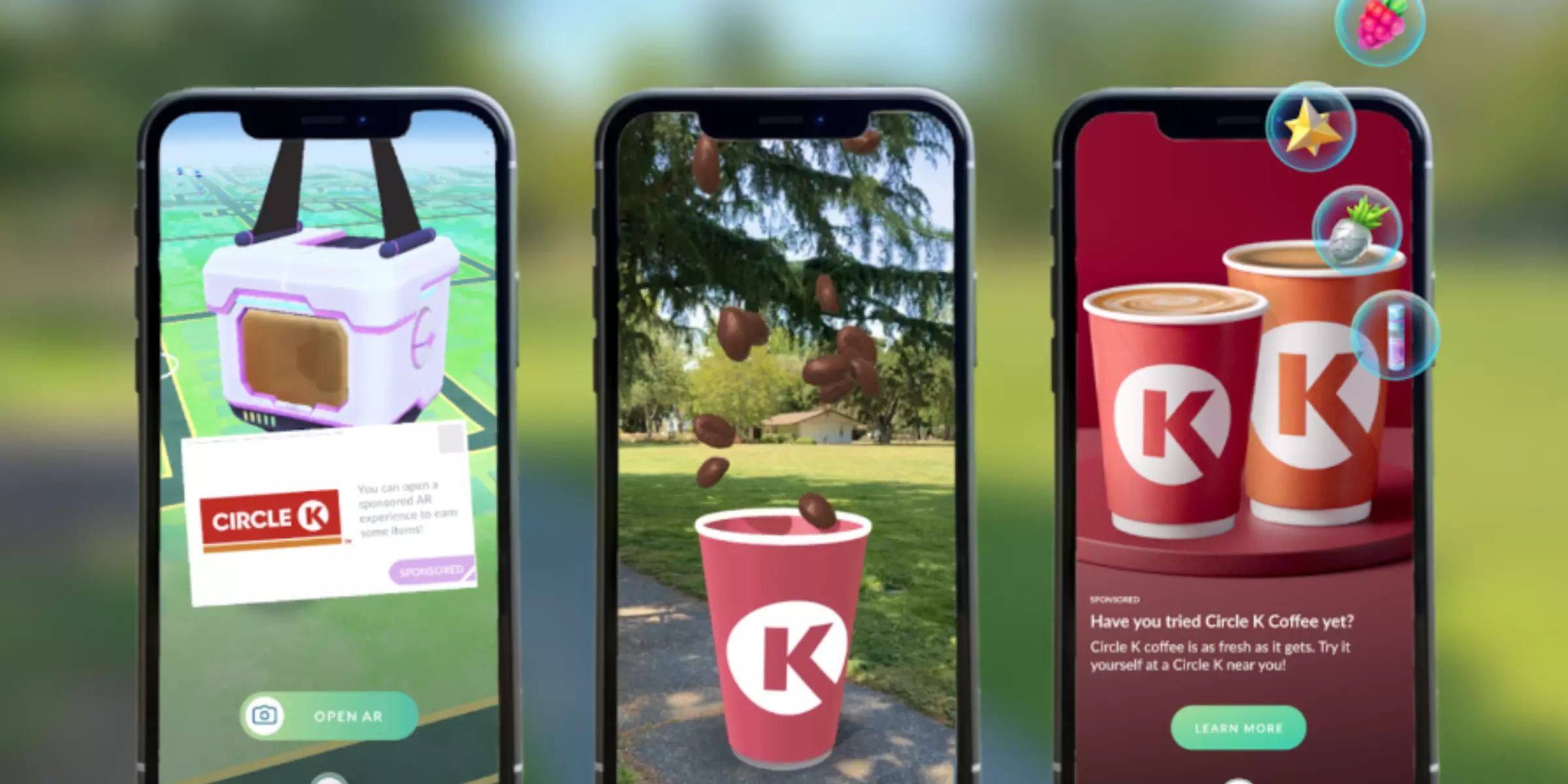
In the year 2023, Circle K partnered with Pokémon Go developers Niantic to drop a series of in-app AR ads. Using Niantic's AR platform, 8th Wall, Circle K was the first collaborator to create Rewarded AR ads with Pokémon Go.
Players of the game were presented with the reward ar ads as a floating balloon in the game, where the player could double tap the box, and the cup would appear giving a free coffee voucher to get coffee from a physical store. According to marketing insights, Circle K saw the rewarded AR campaign resulted in an average engagement rate of 76% and a completion rate of 95% throughout the promotion.
11. Lynx: even angels will fall (2011)
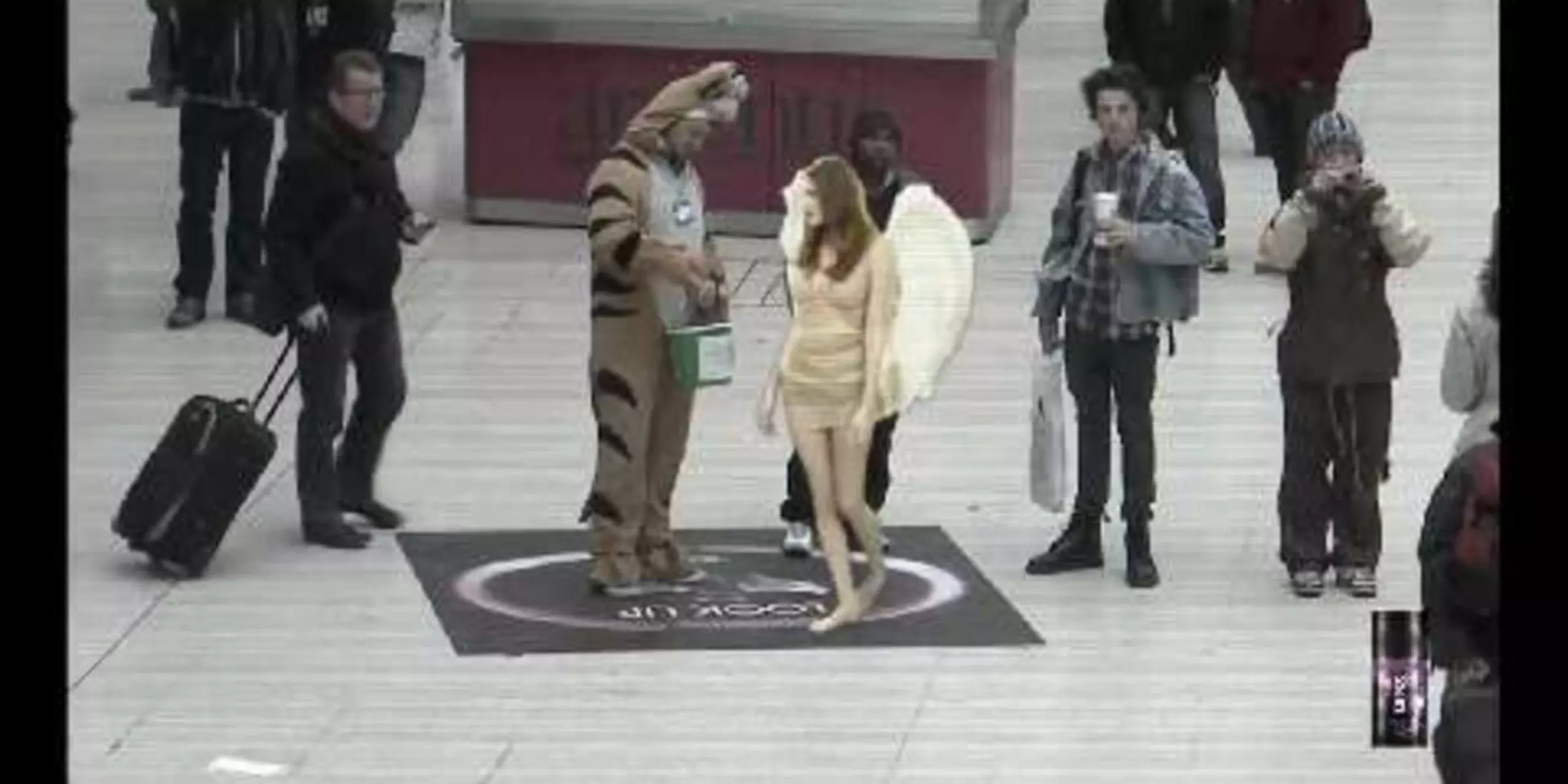
To show richness through fragrance, Lynx created a campaign called "Even Angels Will Fall," which took place in 2011, where the company used AR experiences to run its campaign. At London over Victoria station, where the target sign was placed in the middle of the subway floor, saying to look up if any random people stand over the sign, the angel would appear from the sky, and the audience could see the angle on the giant screen.
It all became possible because of AR technology that Lynx used to create there advertisement. The campaign was created by Bartle Bogle Hegarty, giving the ad an award in outdoor media and categories.
12. Hector&Karger: reallty lookbook (2015)
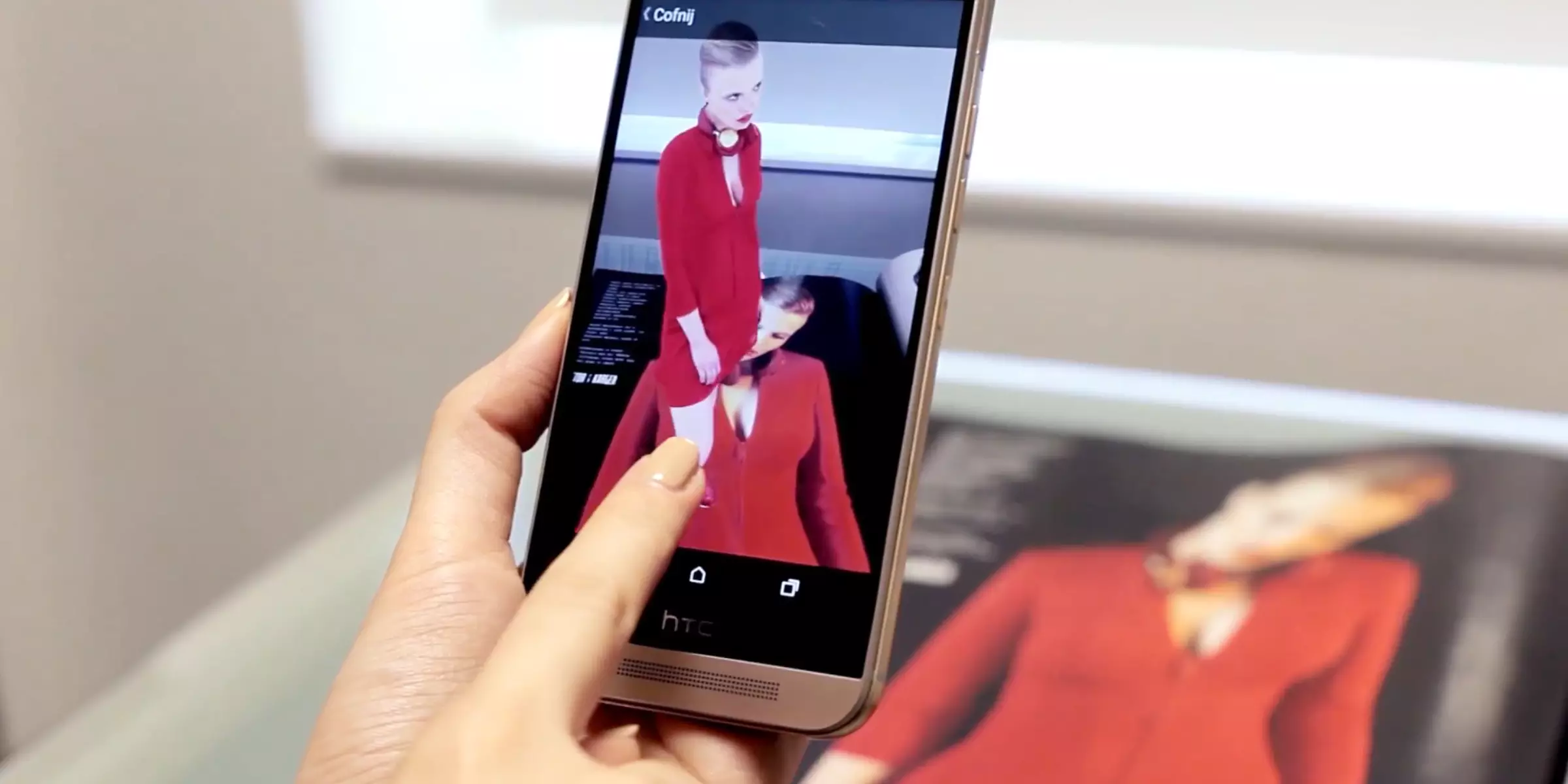
To market their brand, Hector&Karger clicked into AR-style advertising to communicate with their audience effectively. They created an interactive lookbook magazine where users can not only view the printed outfits, but with their smartphones, they could see the outfit with a model in real-time from all angles by scanning the Viva Moda magazine.
Users can buy the product from that collection. This creativity made outfit selection easy for customers from anywhere and gave a new direction for the marketing of the clothing industry.
13. Absolute Truths (2012)
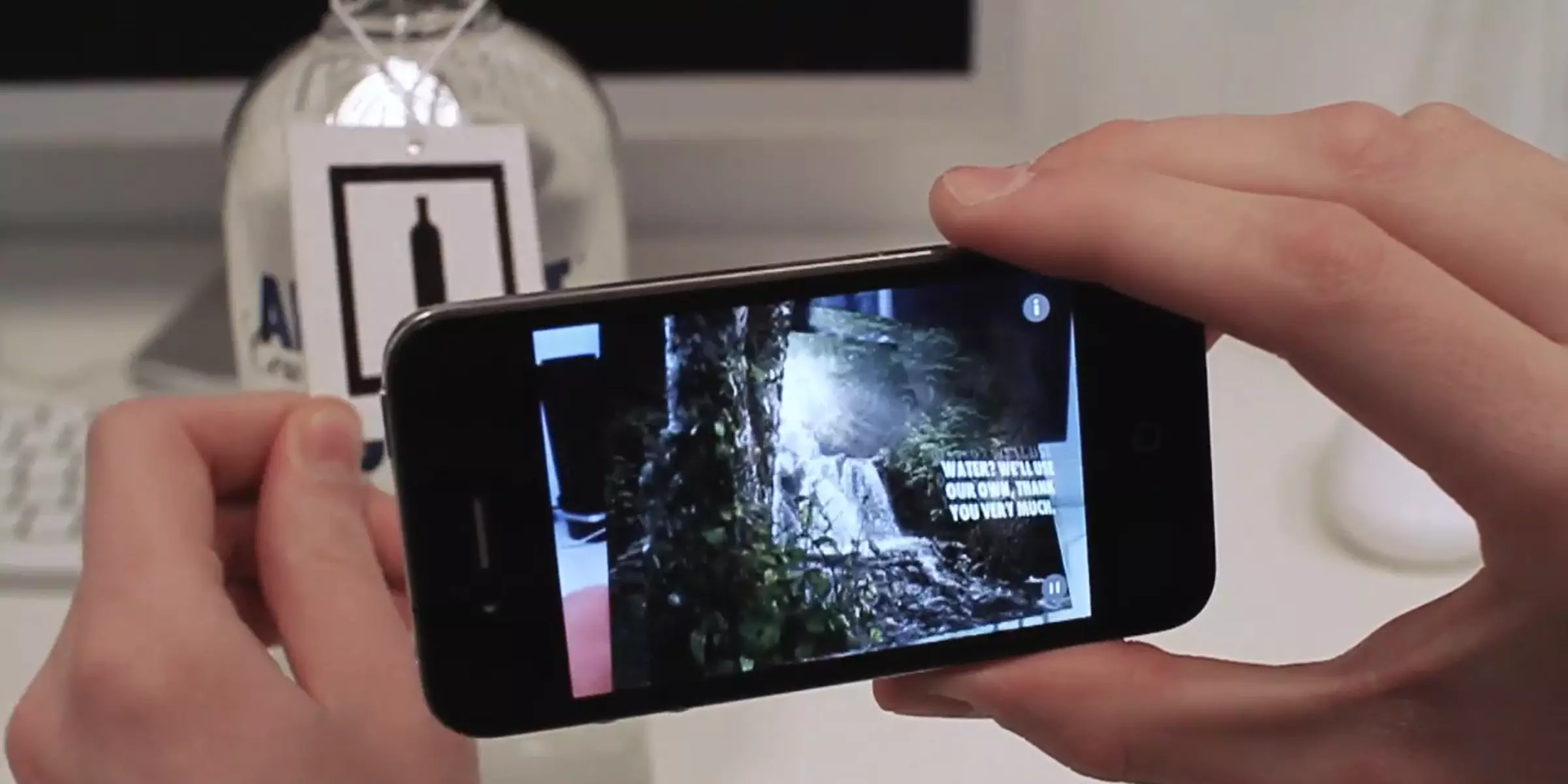
The drinkers have always been fascinated to find the origin and the backstory, which involved those making process, by keeping this concept in mind. Absolute Vodka came up with the campaign called “Absolute Truth,” which gave its consumers a glimpse of their beverage origin tale with a merge of augmented reality into their product.
They provide neck hangers with every bottle, and if a user scans with the smartphone, they will take them on a 3D tour of Ahus, a small village in Sweden where this drink originated, along with with guide of their vodka on how to make it. This innovative branding explains the creative way to connect with the emotions of consumers through AR ads.
14. The Walking Dead Scary Shelter: zombies attack (2015)
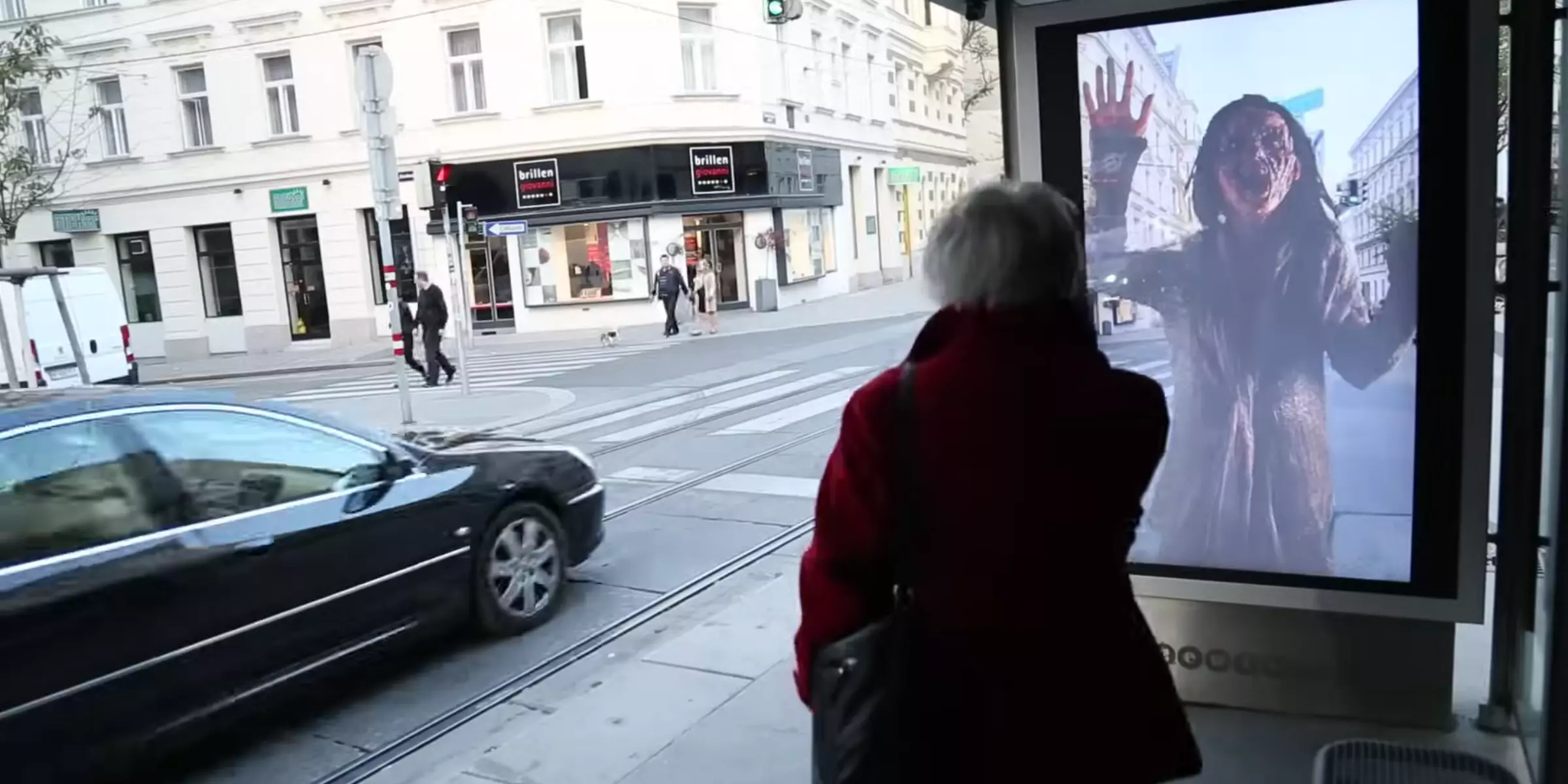
The thrilling and haunting series All of Us Are Dead, with its amazing seasons, planned to promote its fifth season through augmented reality. The event took place at the tram stop in Vienna, which was transformed into a ‘scary shelter’ by placing zombies on a live video stream.
At bus stop environment. The event went viral, winning an award for the OOH campaign for the promotion of the season. This immersive experience created a buzz among the fans for the new season and also set an example of innovative advertising.
15. Vodafone’s ‘elf and seek’ AR game
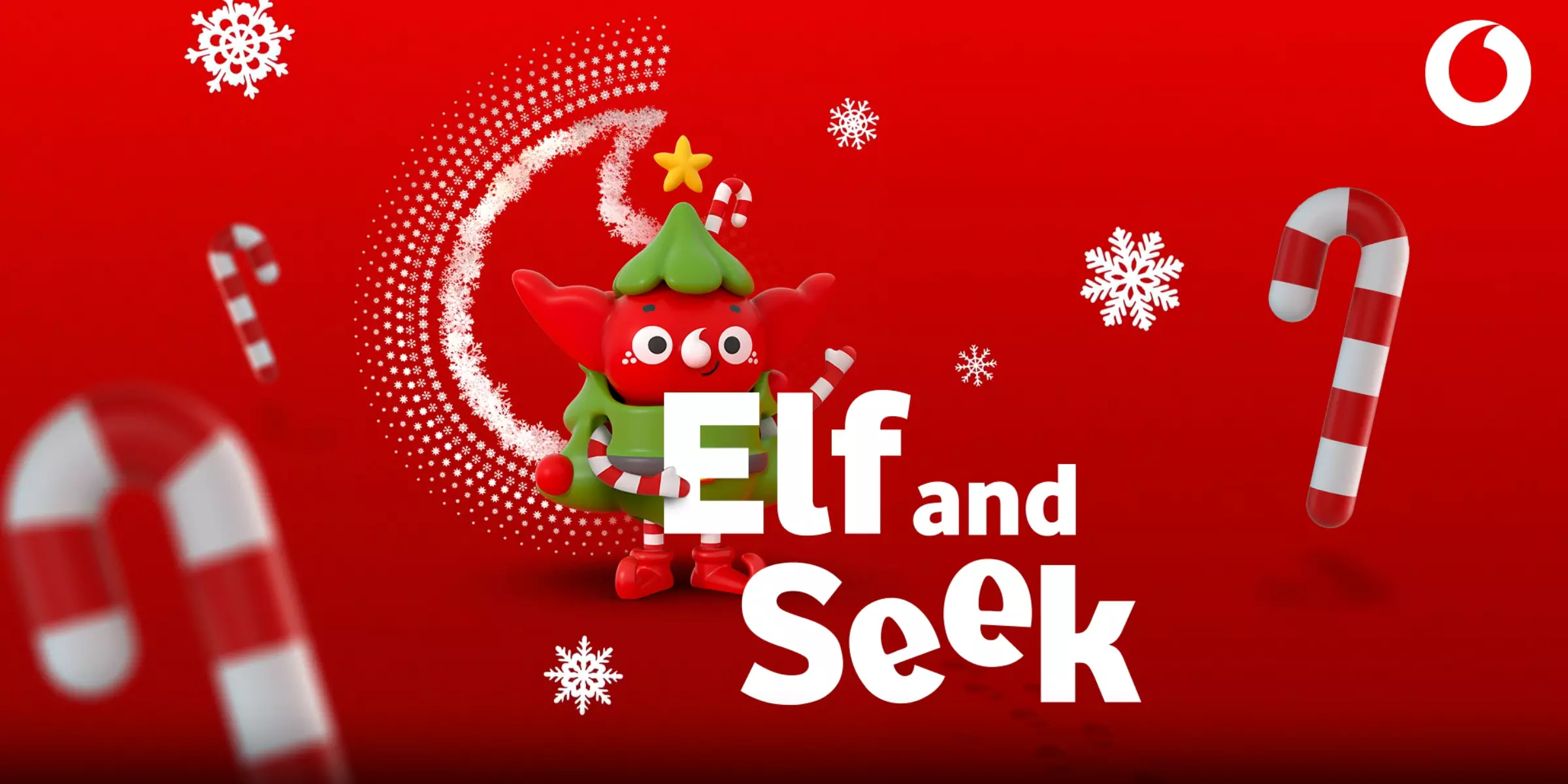
Vopdaohone launched its AR campaign by rereleasing its Elf and Seek game in 2023. It was based on a treasure hunt theme event where players had to catch the digital elves to win exciting prizes, which encouraged the audience to participate.
The campaign ran over 13 days around the UK, bringing the campaign to Ocean Outdoors, interactive screens at Westfield, Liverpool’s Media Wall, Printworks in Manchester, and The Screen in Nottingham. After catching elves, players could post it on social media by claiming #ElfandSeek.
16. Malfy Gin’s ‘escape to a malfy world’ (2023)

Malfy, an Italian gin brand, a collab with augmented reality to bring adventure to their consumers' lives which was ‘Escape to a Malfy World’ here; they showcase through AR how their gin could take you to the sunny Amalfi Coast in Italy, in a 360-degree immersive world with the combination of photography and imaginary imagery. Over 300,000 bottles were tagged with QR codes; there were OOH posters, URLs, and social posts to work as a portal for consumers to enter.
The campaign's targeted age for consumers was 24 to 45 years who were interested in style, travel, adventure, and seeking finer things in life. Once Being enters in AR experience, consumers could choose different routes to progress with several different botanicals. In the end, to frame this experience into their memories, users can click a selfie and share it on social media.
17. Toyota’s AR vehicle visualization and test drive
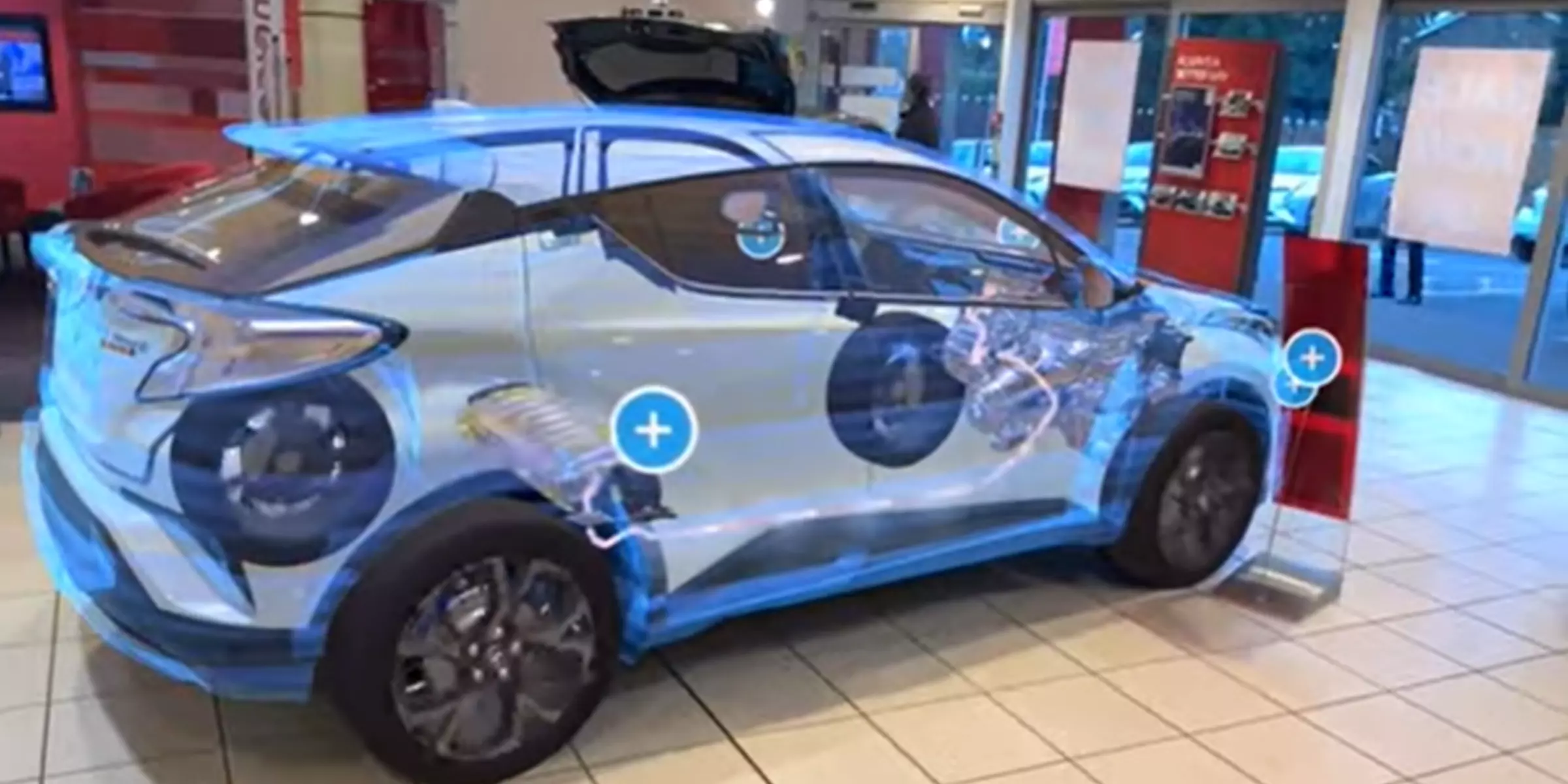
To launch the new crown model campaign Toyota adapted AR technology to be in the mind and steering of the consumers. For promotion, Toyota gave an exciting test drive of the new crown model through AR.
The AR experiences allowed users to see the car in their garage and have 360 walks around the vehicle. It also lets users do a test drive via AR, creating an illusion of riding an actual car. It also educates users about the advanced functions of the crown model. Toyota also runs its campaign on digital billboards, online banner ads, and A short video on TV to reach people at home.
18. Revolut’s ’ ultra AR activation
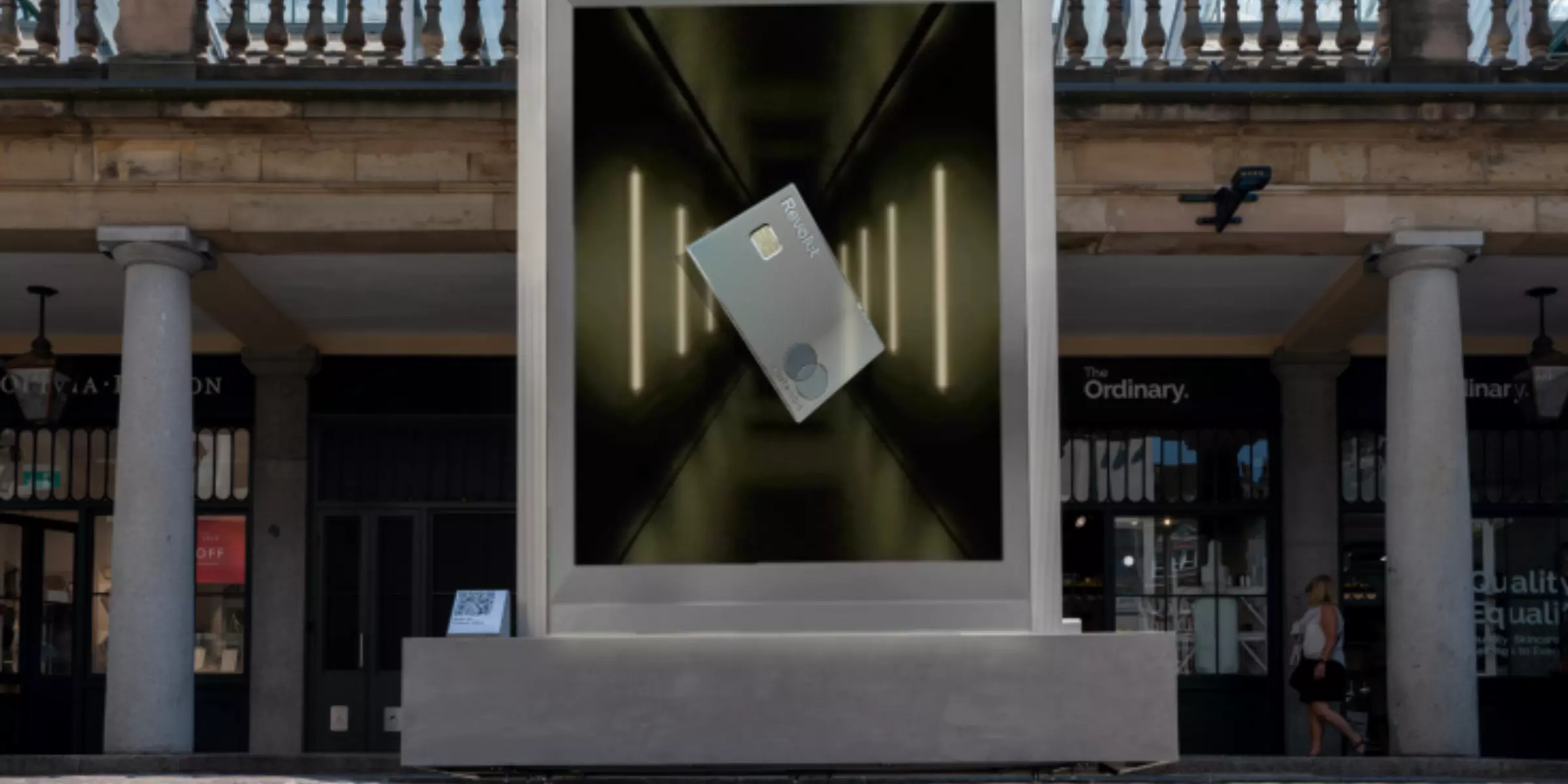
Revolut, a financial app, exhibited a campaign launch for their new plan, ‘Ultra,’ in 2023. The company did not want it just promote any other banking schemes but wanted to stand out exclusively, so to put that thought into visuals, they took the help of AR to create their advertising where they installed sliver platinum portals around the cities of Europe with QR placed on the bottom of the sculpture.
If anybody from the passers scanned the code, they could unlock the mysterious metal card that would appear from the portal. They also created CGI versions of installations at prestige locations to make this event more socially memorable and successful.
19. Mandalorian AR marketing campaign

The popular Disney+ series Mandalorian jumped into the wilderness of AR, creating an app based on the series theme with the help of an AR agency to promote their second season. In this experience, users could visualize some of the awesome characters from the series in their living world.
With Mando and Yoda, fans could reenact those moments and create their own fan memories moment. This app turned the living surrounding into a snowy theme-like series and special effects to make it look like the planet of Star Wars. The picture mode allowed users to click and share their Star Wars moments with the fan community.
20. The weeknd TikTok event

The Canadian singer-songwriter and pop artist ‘The Weeknd’ Used AR in TikTok to make amazing visuals for the new album ‘After Hours’ promotion. In this campaign, they created a digital live experience of scenes changing with each song, and the scenes were picked from the album video to make his fans more connected to the songs.
The live event lets users engage in voting and sharing comments over the scenes. By following the album the buzz the # for the event passes a billion views, making it a large profit to singers revenue. Giving the album a hit and most played in the year 2020.
Best platforms to create AR ads
Take your chance to create an immersive AR ad with the tools which are listed below and make your brand campaign unique and interactive; give your creativity a chance to show its full strength with the help of these tools.
GlamAR
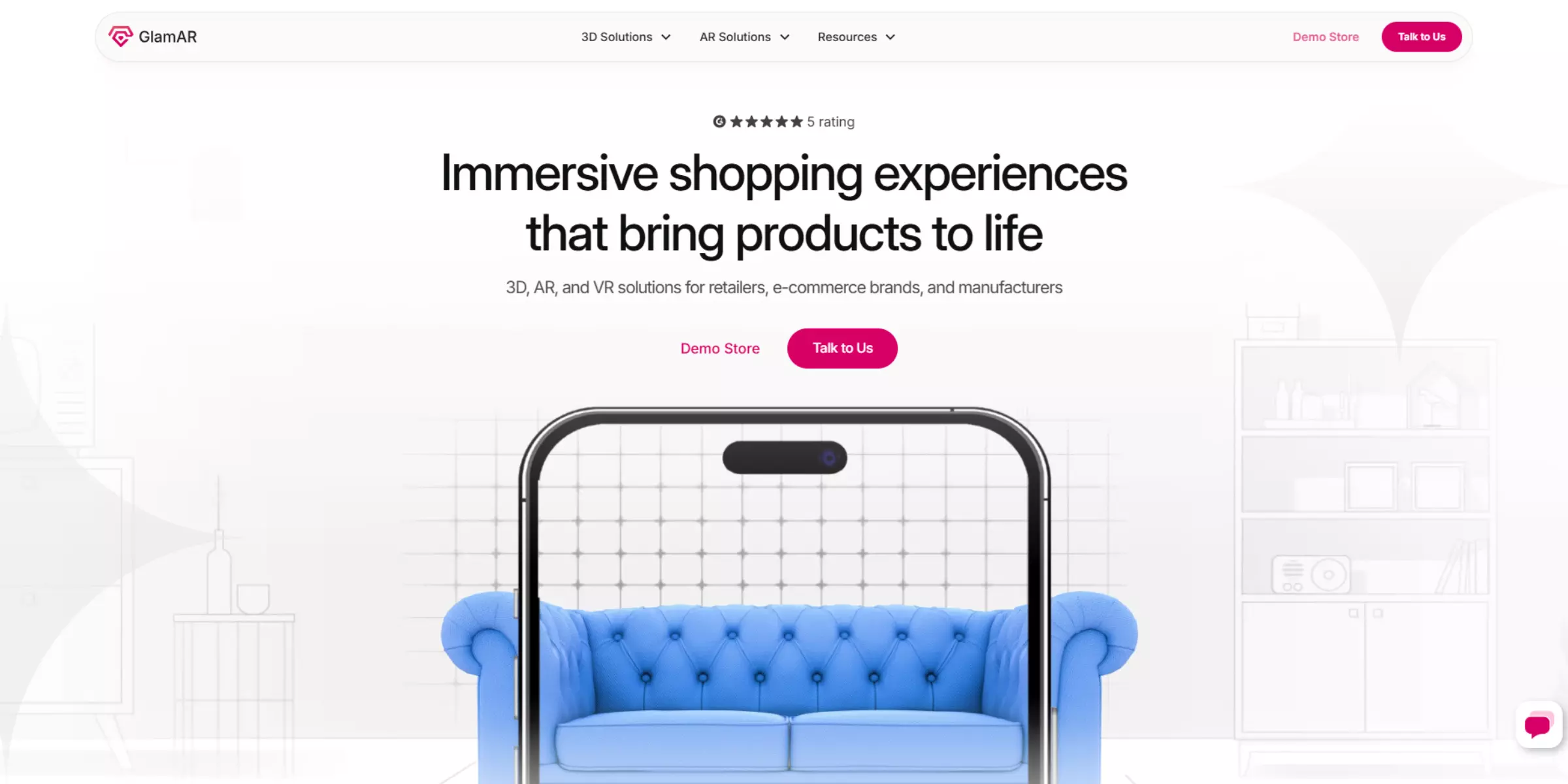
GlamAR creates high-tech AR experiences with its AR and VR technology by giving users an immersive touch of the AR world. It provides businesses with a creative way to make AR advertisements through its interactive augmented reality. It lets users dive into the digital world just by scanning QR codes to pop up 3D models in front of their devices.
GlamAR also offers virtual try-on over makeup, jewelry, clothes, and accessories, giving businesses an opportunity to highlight their products on the global market. Its ability to convert 2D assets into 3D increases product visibility, showcasing every bit of detail and helping consumers make an ideal choice to select any item. This tool integrates with businesses and helps them make a better AR advertisement for audience engagement.
{{component="/internal/widgets"}}
Blippar
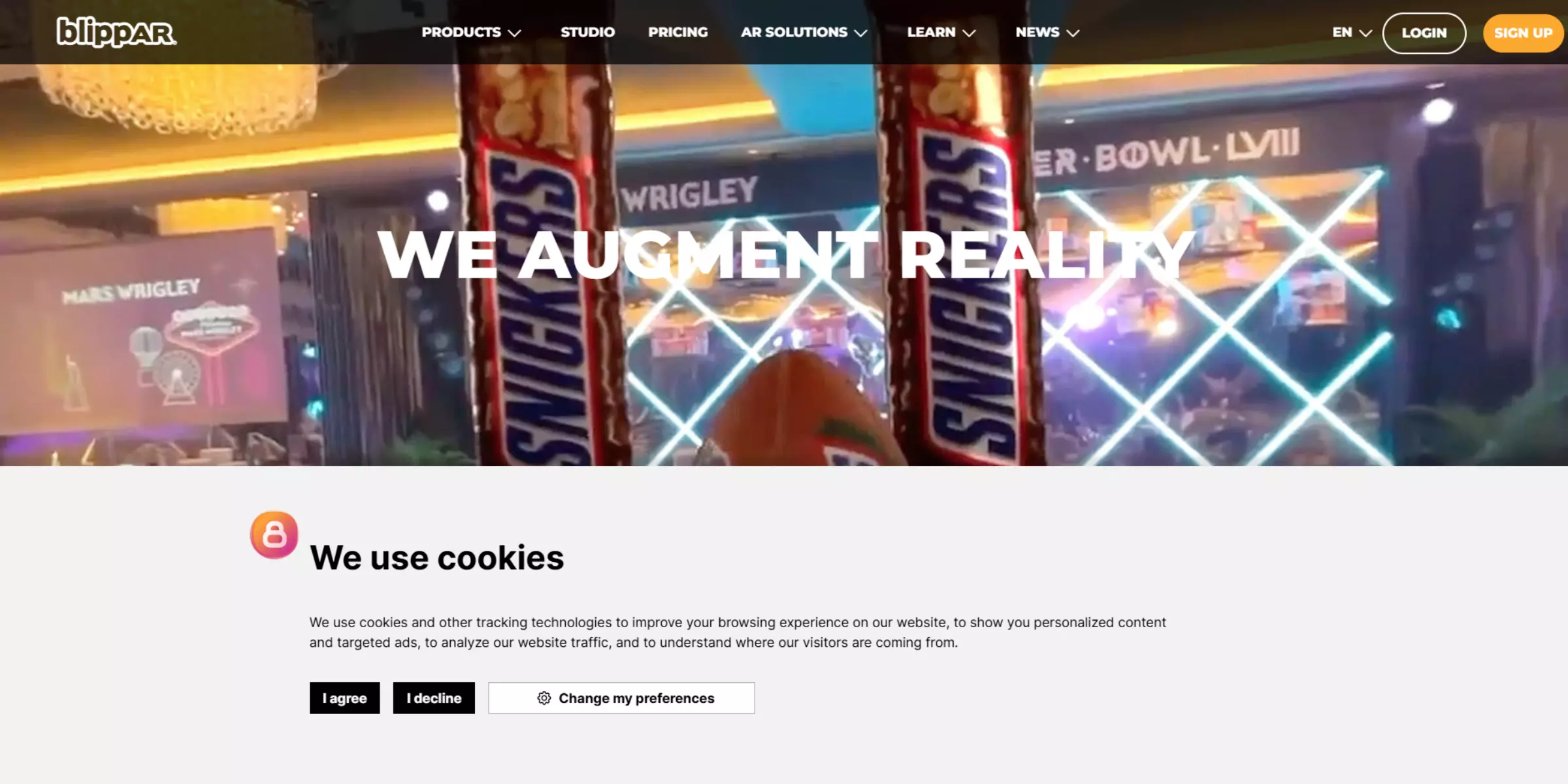
Blippar is a fine augmented reality platform to provides its innovative tool to creators, developers, and users. Its no-code platform allows users to create a web AR experience with the functionality of real-time SLAM, marker, and face-tracking that can be consumed on any device. It makes it possible for users to get access to thousands of 3D models with an instant option to share the experience over the web or social media while collecting feedback in real-time and repeating it as the audience grows.
Its state-of-the-art developing kit is compatible with Unity, PlayCanvas, A-Frame, and Babylon.js, giving customized AR experiences. Its in-house studio team helps to increase brand loyalty, engagement, and sales while reducing return rates. Trusted by global brands, Blippar has collaborated since 2011 to create interactive augmented reality.
ARcore

ARcore Google augmented reality sdk allows developers to build immersive AR experiences across platforms like Android, iOS, web, and Unity by transforming the perspective of people on what they think, play, learn, shop, and create. It smoothly blends digital and real-world with integrated workflows by understanding Google map, using environmental understanding and depth perception.
It also facilitates features like Anchors for tracking object position, Light estimation to correct color in the environment, and Streetscape geometry to structure the building. Its Geospatial API provides AR content over a global scale by using the street view data. Many Brands, developers, and teams around the world use AR core to create unimaginable AR experiences.
8th Wall

8th Wall is an advanced tool to create powerful webAR and XR experiences without depending on the app. It has made it easy for developers to create Augmented reality games, mixed reality, and web AR applications. Being the base for popular industries to create AR advertising for Pepsi, Nike, Netflix, lego, Dior, and Universal Studios, 8th Wall has maintained trust and created a reputation among bigger brands.
The tool also has helped in innovative creations, like "Summit Scramble, "Magic AR Canvas," and "Lost in the Woods." from country Brands to work with global collaborators, 8th Wall has close the gap between industry and consumer through its exceptional AR technology.
How to create your own AR experiences with AR ads
If you want to create captivating advertising by using the power of AR, here is a step-by-step guide to help you out. Whether you are working solo or under a company or have started a small Campaign, the following steps will guide you to think more strategically about AR for your next project.
1. Decide your moment
Deciding the right time to use AR is crucial for your campaign because it shows effects on consumer interaction to its peak. The event, the product launch, is a great time to showcase your AR Campaign that will catch the eye of the users with its immersiveness, User interaction, and social sharing element. As per the mediums, you can use billboards or other OOH posters to make a huge impact.
2. Finalize your AR marketing goals
Picking up the goals is a significant part of every marketing campaign, and AR makes no difference. Your goals should be as per your targeted audience before launching the product. You have to go through with the campaign's runway effects, the hindrances, and the after result. This means that your brand appears relevant to the customer and that the product will carry the idea of your context or will be able to convey the audience.
3. Structure your customer journey
Planning out the map for your product is important whether you are marketing at events or providing OR-based experiences. You should know in advance how your AR experience will interact with any random audiences, like how you want users to interact with your AR experiences, for example, whether there are any microsites that you want users to go through or any location-specific experiences like Snapchat, geofilters, etc. By calculating every bit of detail, you can avoid your campaign going down the path of failure.
4. Come up with the unique and innovative concept
A good advertising campaign is always built from a strong core idea, which takes the entire campaign creative process to huge success. It is important to have an idea that is simple and easy to explain rather being complicated because if you can't explain it, then how the audience would be able to understand the idea always carries an emotional touch, whether it is happy, sad, angry, thrilling, etc. for example Pizza Hut’s Pac man campaign which created the nostalgic memories of childhood among consumers making them connect easily.
5. Understanding of platforms for AR advertising
The major platforms that are highly used for AR advertising are TikTok, Snapchat, and Instagram, and these platforms have the whole population of the world circulating and surfing the content. Here, any brand can showcase its campaign to reach the maximum number of people. The experience will interact with any age group, around 15 to 75, which will surely make the rise in product sales and brand engagement.
TikTok released Branded effects as part of the effect house creation platform where brands can create custom filters like stickers, effects, and lenses as part of their marketing campaign, which led users to interact with the brands easily. Such as Snapchat also allows brands to promote via filters and AR lenses. Whereas for Instagram to create an AR, brands have to design it in Meta Spark Studio.
Conclusion
AR in advertising has uplifted the game of marketing, creating a competitive atmosphere among brands. Generating revenues with its advanced features like visuals, graphics, animation, and sound, AR advertising became a popular practice among popular industries by showcasing new paths to creativity.
Augmented reality (AR) advertising is a form of digital marketing that uses AR technology to create interactive and engaging consumer experiences.
The use of AR in OOH ads can be as simple as a logo hovering in front of a 6-sheet or as complex as a scarily realistic animated 3D dragon perched on top of a billboard. In other words, the creative possibilities AR unlocks in OOH are only limited by what brands can imagine.
Augmented reality is an interactive experience that enhances the real world with computer-generated perceptual information. Using software, apps, and hardware such as AR glasses, augmented reality overlays digital content onto real-life environments and objects.
AR's main use in marketing is showing products in the real world. It lets consumers see them before buying.
Marker-based AR. Markerless AR. Projection-based AR. Superimposition-based AR. Location-based AR.
Augmented reality either makes visual changes to a natural environment or enhances that environment by adding new information. It can be used for various purposes, including gaming, product visualization, marketing campaigns, architecture and home design, education, and industrial manufacturing.




















